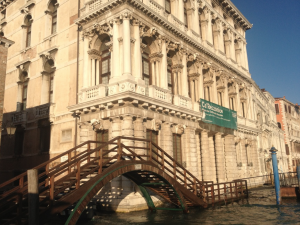14 Sept 2022 — AGM + How to steal a million
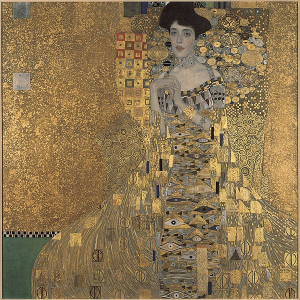
We have all heard about audacious art heists that are more like blockbuster movies than run-of-the-mill burglaries. In this lecture, we are going to look at famous art thefts, discuss what motivates art thieves as well as examine what aspects the thefts have in common. We will also look at where the burglars made mistakes, which enabled investigators to swoop in and recover stolen masterpieces. In many cases, the police sting operations were just as daring as the thefts.
 Lecturer: Shauna Isaac has been active in World War II art restitution for several years and has worked with families and government organisations to recover Nazi looted art. She set up the Central Registry on Looted Cultural Property and served as a member of the Working Group for the Holocaust Era Assets Conference in Prague. Shauna studied at the Courtauld Institute of Art in the UK and Smith College in the USA. She is a regular lecturer at the Sotheby’s Institute of Art. Her publications include articles for The Art Newspaper, The Times Literary Supplement and Art Quarterly. She is a contributor to the book Insiders/Outsiders: Refugees from Nazi Europe and their contribution to British Visual Culture.
Lecturer: Shauna Isaac has been active in World War II art restitution for several years and has worked with families and government organisations to recover Nazi looted art. She set up the Central Registry on Looted Cultural Property and served as a member of the Working Group for the Holocaust Era Assets Conference in Prague. Shauna studied at the Courtauld Institute of Art in the UK and Smith College in the USA. She is a regular lecturer at the Sotheby’s Institute of Art. Her publications include articles for The Art Newspaper, The Times Literary Supplement and Art Quarterly. She is a contributor to the book Insiders/Outsiders: Refugees from Nazi Europe and their contribution to British Visual Culture.
12 Oct 2022 — Winslow Homer and the art of New England
Winslow Homer trained originally as a newspaper illustrator, imbuing his style with a distinctive, graphic clarity designed to make an immediate impact. His approach to watercolour, distinguished by its glowing colours and faultless technique, combined with his interest in both natural and social subject matter, make his work especially attractive. Best known for his dramatic and moody seascapes, through his careful and moving studies of individuals such as farmworkers and teachers in his homelands of New England he also presents us with a fascinating and at times nostalgic portrait of the heart of America at a time of rapid expansion and change.
 Lecturer: Brian Healey A senior modern languages teacher in an independent grammar school for many years, Brian has also enjoyed a successful parallel career since the 1980s as a professional artist and interior designer. Since 2006 he has been regularly appointed to a number of prestigious ocean and river cruise lines, either as resident artist, guest lecturer on art history or as destination speaker for more than forty countries. Most recently this work has successfully extended to art guiding through important towns and museums in France, Belgium, Holland and Spain.
Lecturer: Brian Healey A senior modern languages teacher in an independent grammar school for many years, Brian has also enjoyed a successful parallel career since the 1980s as a professional artist and interior designer. Since 2006 he has been regularly appointed to a number of prestigious ocean and river cruise lines, either as resident artist, guest lecturer on art history or as destination speaker for more than forty countries. Most recently this work has successfully extended to art guiding through important towns and museums in France, Belgium, Holland and Spain.
9 Nov 2022 — A truly cultured woman is as rare as the phoenix: the life and work of Isabella d’Este
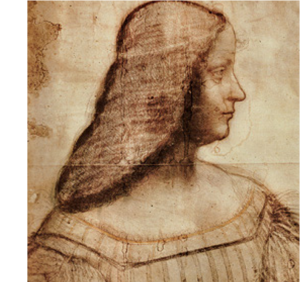 In an age where women had little public power, Isabella d’Este (1474–1539) stands out as a formidable figure. She was one of the first and greatest female patrons and art collectors of the Renaissance. And her court in Mantua was filled with writers and poets of distinction. Her clever, educated and entitled voice sings out from thousands of letters that she composed in her meticulously designed study, and images – from Da Vinci to Titian – bring alive a woman whose eye for fashion was every bit as keen as her eye for art.
In an age where women had little public power, Isabella d’Este (1474–1539) stands out as a formidable figure. She was one of the first and greatest female patrons and art collectors of the Renaissance. And her court in Mantua was filled with writers and poets of distinction. Her clever, educated and entitled voice sings out from thousands of letters that she composed in her meticulously designed study, and images – from Da Vinci to Titian – bring alive a woman whose eye for fashion was every bit as keen as her eye for art.
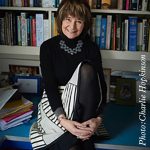 Lecturer: Sarah Dunant Novelist, broadcaster and critic. Sarah read history at Cambridge, then worked for many years as a cultural journalist in radio and television on such programmes as Kaleidoscope (BBC Radio 4), The Late Show (BBC 2), and Night Waves (BBC Radio 3). She has published thirteen novels, taught renaissance studies at Washington University, St Louis, is a visiting tutor on the MA in creative writing at Oxford Brookes and has lectured around the world at festivals and conferences. Her last five novels have been set within the Italian Renaissance. In the Name of the Family (2017) completes the story of the Borgia family and the remarkable period of Italian history in which they lived. Her recent series on history for BBC Radio 4, called When Greeks Flew Kites, is available on BBC Sounds
Lecturer: Sarah Dunant Novelist, broadcaster and critic. Sarah read history at Cambridge, then worked for many years as a cultural journalist in radio and television on such programmes as Kaleidoscope (BBC Radio 4), The Late Show (BBC 2), and Night Waves (BBC Radio 3). She has published thirteen novels, taught renaissance studies at Washington University, St Louis, is a visiting tutor on the MA in creative writing at Oxford Brookes and has lectured around the world at festivals and conferences. Her last five novels have been set within the Italian Renaissance. In the Name of the Family (2017) completes the story of the Borgia family and the remarkable period of Italian history in which they lived. Her recent series on history for BBC Radio 4, called When Greeks Flew Kites, is available on BBC Sounds
14 Dec 2022 — Nothing says Christmas like an axe-fight: courtly spectacles of the Renaissance
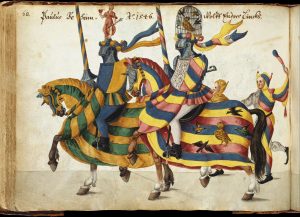 In the Renaissance, Christmas was a popular time to hold jousts, tournaments and courtly spectacles. In the dark dead of winter, a colourful, glamorous celebration of chivalry very much took on the role of a kind of sixteenth-century ‘festival of light’. In England, Christmas jousts became especially popular under that famous lover of armour and fighting, King Henry VIII. Such events were a kind of performance art, which fused real armoured combat with fantastical, mythological and allegorical themes. In this lecture, we explore this rich history through the personal experiences of the lecturer, an academic specialist but also one of the world’s foremost jousters and medieval martial artists.
In the Renaissance, Christmas was a popular time to hold jousts, tournaments and courtly spectacles. In the dark dead of winter, a colourful, glamorous celebration of chivalry very much took on the role of a kind of sixteenth-century ‘festival of light’. In England, Christmas jousts became especially popular under that famous lover of armour and fighting, King Henry VIII. Such events were a kind of performance art, which fused real armoured combat with fantastical, mythological and allegorical themes. In this lecture, we explore this rich history through the personal experiences of the lecturer, an academic specialist but also one of the world’s foremost jousters and medieval martial artists.
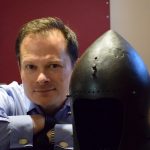 Lecturer: Tobias Capwell is Curator of Arms and Armour at the Wallace Collection in London and an internationally-acknowledged authority on Medieval and Renaissance weapons. He is the author of numerous books on the subject of arms and armour, including Masterpieces of European Arms and Armour at the Wallace Collection (2011; Apollo Magazine Book of the Year 2012); The Noble Art of the Sword: Fashion and Fencing in Renaissance Europe 1520-1630, ex. cat. (2012); Armour of the English Knight 1400-1450 (2015; Military History Monthly Illustrated Book of the Year 2017); and most recently Arms and Armour of the Medieval Joust (2018). Toby also appears regularly on television, most recently on A Stitch in Time (2018; BBC4); as presenter and armour advisor on Richard III: The New Evidence (2014; C4), and as the writer and presenter of Metalworks: The Knight’s Tale (2012; BBC4). In 2015 Toby had the unusual honour of serving as one of the two fully armoured horsemen escorting the remains of King Richard III, from the battlefield at Bosworth to their final resting place in Leicester Cathedral.
Lecturer: Tobias Capwell is Curator of Arms and Armour at the Wallace Collection in London and an internationally-acknowledged authority on Medieval and Renaissance weapons. He is the author of numerous books on the subject of arms and armour, including Masterpieces of European Arms and Armour at the Wallace Collection (2011; Apollo Magazine Book of the Year 2012); The Noble Art of the Sword: Fashion and Fencing in Renaissance Europe 1520-1630, ex. cat. (2012); Armour of the English Knight 1400-1450 (2015; Military History Monthly Illustrated Book of the Year 2017); and most recently Arms and Armour of the Medieval Joust (2018). Toby also appears regularly on television, most recently on A Stitch in Time (2018; BBC4); as presenter and armour advisor on Richard III: The New Evidence (2014; C4), and as the writer and presenter of Metalworks: The Knight’s Tale (2012; BBC4). In 2015 Toby had the unusual honour of serving as one of the two fully armoured horsemen escorting the remains of King Richard III, from the battlefield at Bosworth to their final resting place in Leicester Cathedral.
11 Jan 2023 — Music in the great art collections of Europe
Many of the great, but smaller, European art collections are tucked away in side streets, country houses and provincial towns, known often only to connoisseurs and local communities. With an eye to important paintings, musical instruments and pictures with musical content, Peter Medhurst explores some of these quality galleries, and examines the contents of the Mauritshuis in the Hague, the Fitzwilliam Museum in Cambridge, Burghley House in Lincolnshire, the Dulwich Picture Gallery in London, the Vleeshuis in Antwerp and the Ca’ Rezzonico in Venice. The lecture, which also makes an excellent study day, is illustrated throughout with live music sung and played at the piano, the virginals or the harpsichord.
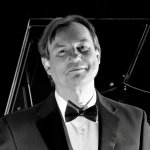 Lecturer: Peter Medhurst appears in the UK and abroad as a musician and scholar, giving recitals and delivering illustrated lectures on music and the arts. He studied singing and early keyboard instruments at the Royal College of Music and at the Mozarteum in Salzburg.
Lecturer: Peter Medhurst appears in the UK and abroad as a musician and scholar, giving recitals and delivering illustrated lectures on music and the arts. He studied singing and early keyboard instruments at the Royal College of Music and at the Mozarteum in Salzburg.
8 Feb 2023 — The arts of Japan: highlights of Japanese art and culture

This lecture will provide an introduction to and an overview of the arts of Japan. It will chart the development of key aspects of the Japanese aesthetic in painting, sculpture and the applied arts through different periods of history. Contact with China and the West, contrasting aristocratic and military tastes and the growth of townsmen’s culture in the Edo period have all contributed to distinctive visual trends and techniques. An exploration of the impact of Zen Buddhism on Japanese culture, particularly in the areas of gardening and the tea ceremony, will convey further insights into the Japanese aesthetic as it has evolved through the ages. Following Japan’s reopening to trade with the West in the mid-19th century, modernisation and westernisation came to inform changes in the content, materials and stylistic vocabulary of the arts of Meiji Japan.
 Lecturer: Marie Conte-Helm is a long-established Arts Society Lecturer with a BA in History of Art and an MA in Asian Art and is a Fellow of the Royal Society of Arts. She was Director General of the Daiwa Anglo-Japanese Foundation from 1999-2011 and has held senior academic posts at various UK universities. She has most recently served as Executive Director of the UK-Japan 21st Century Group and as a member of the Board of Governors of the University for the Creative Arts. She is widely published and has lectured throughout the UK and abroad. She is also an experienced cruise speaker and a Resident Historian with Viking Ocean Cruises, lecturing on many aspects of Asian Art and East-West Encounters. She was awarded an OBE in the 2011 Queen’s Birthday Honours for services to UK-Japan educational and cultural relations and the Order of the Rising Sun, Gold Rays with Rosette by the Government of Japan in 2019.
Lecturer: Marie Conte-Helm is a long-established Arts Society Lecturer with a BA in History of Art and an MA in Asian Art and is a Fellow of the Royal Society of Arts. She was Director General of the Daiwa Anglo-Japanese Foundation from 1999-2011 and has held senior academic posts at various UK universities. She has most recently served as Executive Director of the UK-Japan 21st Century Group and as a member of the Board of Governors of the University for the Creative Arts. She is widely published and has lectured throughout the UK and abroad. She is also an experienced cruise speaker and a Resident Historian with Viking Ocean Cruises, lecturing on many aspects of Asian Art and East-West Encounters. She was awarded an OBE in the 2011 Queen’s Birthday Honours for services to UK-Japan educational and cultural relations and the Order of the Rising Sun, Gold Rays with Rosette by the Government of Japan in 2019.
8 Mar 2023 — Taken by surprise: a revolution in the art of the poster
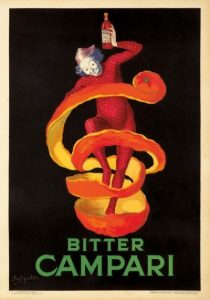
The year is 1901. Toulouse-Lautrec has just died. An orange zebra sips Campari, a tiger tears at a tyre, a clown leaps out of a lemon and a woman on horseback heralds a new era of chocolate. Advertising posters have never been the same. Wit-lashed with their imagery, tongue-foo-ed by their visions, we ask, “Who were the first Mad Men?” The word “nice” was not in their vocabulary. That just meant “mediocrity”. This talk is entertaining, lavishly illustrated with vintage posters and delivered by a lecturer who successfully made this his own profession.
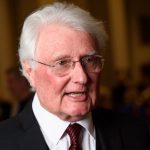 Lecturer: Charles Harris focuses on the role of posters and poster artists in the history of advertising. He is a global-award winning Creative Director of international advertising agencies and has lectured extensively on design, illustration and photographic styles as they have influenced the building of brands. He has himself created posters for major brands, including British Airways, Nestlé, Sony, General Motors and Shell. His travel writing and photography have appeared in various airline magazines as well as Time. He has also written and produced several hundred TV and radio commercials and corporate video programmes. Charles is a member of The Arts Society Winchester.
Lecturer: Charles Harris focuses on the role of posters and poster artists in the history of advertising. He is a global-award winning Creative Director of international advertising agencies and has lectured extensively on design, illustration and photographic styles as they have influenced the building of brands. He has himself created posters for major brands, including British Airways, Nestlé, Sony, General Motors and Shell. His travel writing and photography have appeared in various airline magazines as well as Time. He has also written and produced several hundred TV and radio commercials and corporate video programmes. Charles is a member of The Arts Society Winchester.
12 Apr 2023 — The architecture of the British Raj: colonial architecture in India; the buildings, their history and future
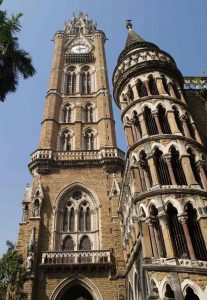
This talk’s narrative revolves around the lecturer’s experience of having masterminded a British Government backed project to restore the magnificent George Gilbert Scott designed university buildings in Mumbai. The chapters of this building’s story – its design (in England), construction, history and of course its restoration – provide useful startpoints from which to consider the broader historical, cultural and architectural context. For instance, the lecture looks into Mumbai’s economic boom of the 1860s. This coincided with the high point of the Gothic Revival: nowhere else in the world can claim to have as magnificent an assemblage of Gothic Revival buildings. Whilst examining the city’s colonial architecture, study is made of the carvings of Mumbai’s Jeejeebhoy School of Art, whose Architectural Sculpture Department (during this mid-Victorian heyday) was headed up by John Lockwood Kipling, father of Rudyard Kipling. The story of the award-winning project to restore the University of Mumbai’s Gothic Revival buildings provides an opportunity to touch upon philosophical approaches to conservation as well as traditional repair techniques. Account is also given of the work undertaken by those who took time away from their respective Cathedral workshops in the UK to transfer knowledge and skills to their Indian counterparts. Venturing beyond Mumbai to consider key colonial buildings in Delhi, Kolkata and Yangon, the scope of the lecture broadens to examine evolving attitudes in India and beyond (as well as in the UK) towards the British empire and also towards the buildings that survive as testament to its achievements.
 Lecturer: Anthony Peers is a freelance historic buildings’ consultant, educated as an Architectural Historian at Manchester University and trained in building conservation at the Institute of Advanced Architectural Studies, York. After two years with SAVE Britain’s Heritage, where he wrote Deserted Bastions, he worked with the English Heritage Listing Division on the review of military buildings. In the mid-1990s Anthony was employed by the DTI in Bombay, India, setting up and running an innovative project to repair George Gilbert Scott’s university buildings and training local architects and craftsmen in conservation techniques and philosophy. From 1998 until 2010, worked as Rodney Melville & Partners’ historian, involved with research, analysis, assessment and conservation planning at such sites as The Workhouse, Southwell; Aston Hall, Birmingham; The Royal Institution, London and Cliveden. He published a book on the History of Birmingham Town Hall in 2012 to critical acclaim. Anthony is a Fellow of the Society of Antiquaries and Deputy Chair of the Ancient Monuments Society.
Lecturer: Anthony Peers is a freelance historic buildings’ consultant, educated as an Architectural Historian at Manchester University and trained in building conservation at the Institute of Advanced Architectural Studies, York. After two years with SAVE Britain’s Heritage, where he wrote Deserted Bastions, he worked with the English Heritage Listing Division on the review of military buildings. In the mid-1990s Anthony was employed by the DTI in Bombay, India, setting up and running an innovative project to repair George Gilbert Scott’s university buildings and training local architects and craftsmen in conservation techniques and philosophy. From 1998 until 2010, worked as Rodney Melville & Partners’ historian, involved with research, analysis, assessment and conservation planning at such sites as The Workhouse, Southwell; Aston Hall, Birmingham; The Royal Institution, London and Cliveden. He published a book on the History of Birmingham Town Hall in 2012 to critical acclaim. Anthony is a Fellow of the Society of Antiquaries and Deputy Chair of the Ancient Monuments Society.
10 May 2023 — Donatello: Renaissance genius
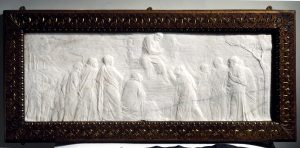 Donatello is an artistic giant of the Renaissance and has been called the greatest sculptor of all time. Outstandingly original and inventive across a range of media, he pioneered the new style that emerged in Florence around 1400, transforming its visual language (and visual landscape) through public and private sculptures — including for the Medici. This lecture highlights Donatello’s versatility and innovation in works for patrons in Florence, Siena and Padua.
Donatello is an artistic giant of the Renaissance and has been called the greatest sculptor of all time. Outstandingly original and inventive across a range of media, he pioneered the new style that emerged in Florence around 1400, transforming its visual language (and visual landscape) through public and private sculptures — including for the Medici. This lecture highlights Donatello’s versatility and innovation in works for patrons in Florence, Siena and Padua.
 Lecturer: Paula Nuttall is Director of the V&A Medieval and Renaissance Year Course. She is a specialist in Renaissance art, both Italian and northern European, on which she has published widely, notably From Flanders to Florence: the Impact of Netherlandish Painting 1400-1500 (Yale, 2004).She has collaborated on major exhibitions including Jan van Eyck: an Optical Revolution (Ghent, 2020) and was formerly a lecturer at the Courtauld Institute and the British Institute of Florence.
Lecturer: Paula Nuttall is Director of the V&A Medieval and Renaissance Year Course. She is a specialist in Renaissance art, both Italian and northern European, on which she has published widely, notably From Flanders to Florence: the Impact of Netherlandish Painting 1400-1500 (Yale, 2004).She has collaborated on major exhibitions including Jan van Eyck: an Optical Revolution (Ghent, 2020) and was formerly a lecturer at the Courtauld Institute and the British Institute of Florence.
14 Jun 2023 — Crown and chalices: the art of the mediaeval goldsmith
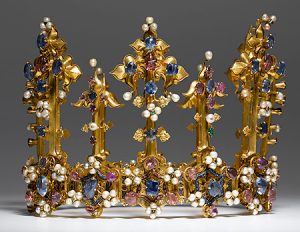 Mediaeval goldsmiths worked with precious metals, particularly gold and silver. They were skilled at casting and forging, enamelling and setting precious stones and they produced some of the most intrinsically valuable and visually stunning small-scale objects that survive from the Middle Ages. The lecture will focus on ecclesiastical commissions as well as considering the lavish patronage of the nobility and royalty, including their devotional aids, plate and jewellery.
Mediaeval goldsmiths worked with precious metals, particularly gold and silver. They were skilled at casting and forging, enamelling and setting precious stones and they produced some of the most intrinsically valuable and visually stunning small-scale objects that survive from the Middle Ages. The lecture will focus on ecclesiastical commissions as well as considering the lavish patronage of the nobility and royalty, including their devotional aids, plate and jewellery.
 Lecturer: Sally Dormer is a lecturer and tutor for the Early Mediaeval Year Course at V&A. She is Dean of ‘European Studies’ for two US universities, freelance lecturer for The Art Fund, as well as conducting study tours, cruises and tour groups. Sally has a BA (History) University of Durham, PhD (Mediaeval Manuscript illumination) and MA (Mediaeval History of Art) Courtauld Institute.
Lecturer: Sally Dormer is a lecturer and tutor for the Early Mediaeval Year Course at V&A. She is Dean of ‘European Studies’ for two US universities, freelance lecturer for The Art Fund, as well as conducting study tours, cruises and tour groups. Sally has a BA (History) University of Durham, PhD (Mediaeval Manuscript illumination) and MA (Mediaeval History of Art) Courtauld Institute.
13 Sep 2023 — Rescuing Zeugma from the floodwaters of the Euphrates

In Spring 2000 an archaeological drama began to unfold on the banks of the Euphrates river in Turkey, close to the border with Syria. A small team of French and Turkish archaeologists found a Roman city on the banks of the river, with mosaics and wall-paintings finer than those of Pompeii. However, just beside them was the almost completed Birecik Dam, and the Turks had begun to flood the great reservoir behind it, taking the city under water. This lecture tells the story of the extraordinary archaeological rescue excavation that then took place (racing against the inexorable waters for four and a half months as they rose at a rate of two feet a day) and the fabulous treasures recovered, including mosaic floors (arguably the finest ever found) depicting colourful scenes from myth and legend.
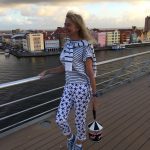 Lecturer: Louise Schofield is an archaeologist who was Curator of Greek Bronze Age and Geometric Antiquities at the British Museum from 1987-2000. Her book, The Mycenaeans, was co-published by the Getty Museum and the British Museum in 2007. She now writes, lectures and runs international archaeological projects – previously in south-eastern Turkey, Greece and Albania and currently in Ethiopia. And rather wonderfully she has been appointed Visiting Professor of Archaeology at the American University of Rome.
Lecturer: Louise Schofield is an archaeologist who was Curator of Greek Bronze Age and Geometric Antiquities at the British Museum from 1987-2000. Her book, The Mycenaeans, was co-published by the Getty Museum and the British Museum in 2007. She now writes, lectures and runs international archaeological projects – previously in south-eastern Turkey, Greece and Albania and currently in Ethiopia. And rather wonderfully she has been appointed Visiting Professor of Archaeology at the American University of Rome.


